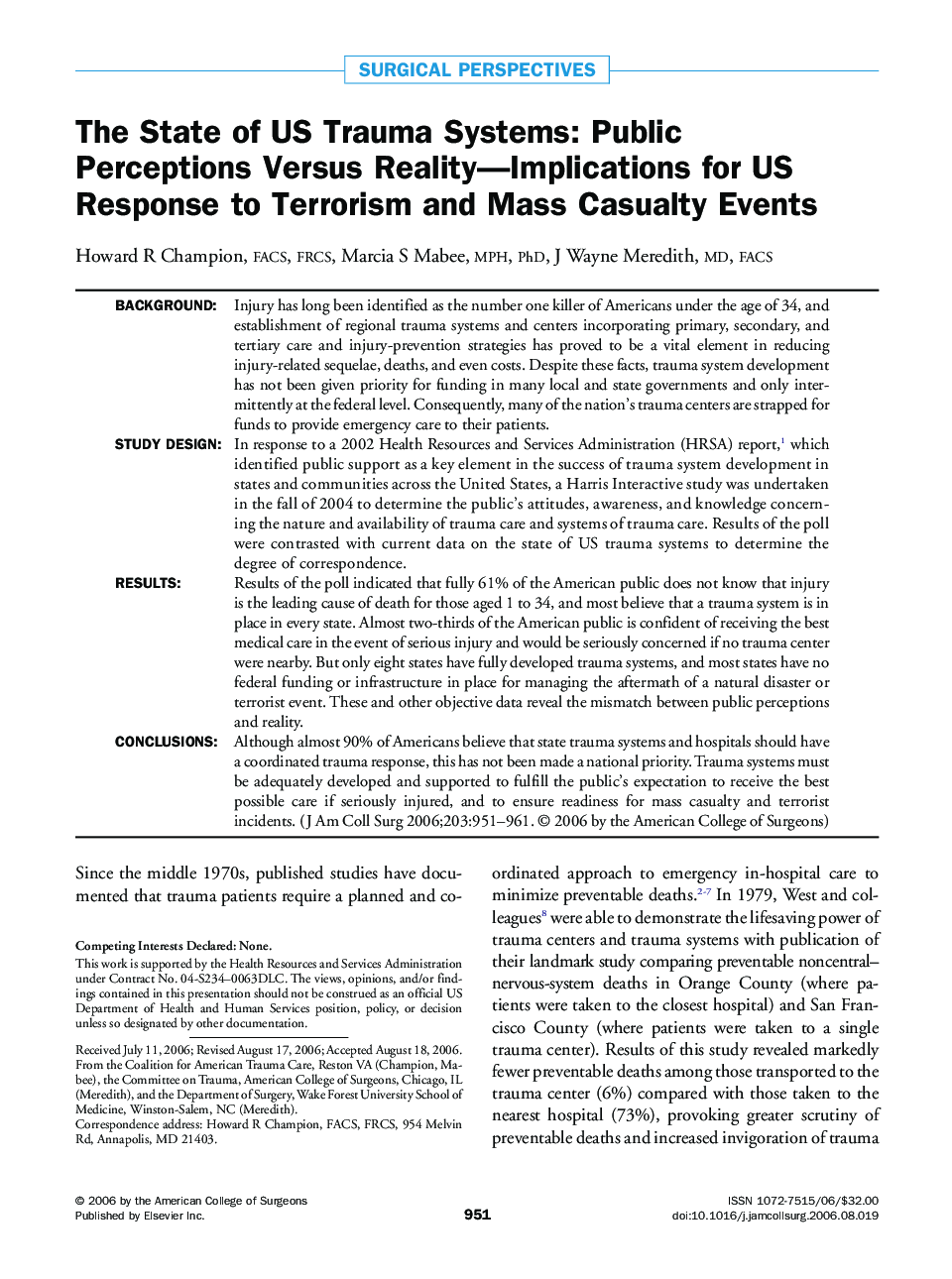| کد مقاله | کد نشریه | سال انتشار | مقاله انگلیسی | نسخه تمام متن |
|---|---|---|---|---|
| 4295924 | 1612331 | 2006 | 11 صفحه PDF | دانلود رایگان |

BackgroundInjury has long been identified as the number one killer of Americans under the age of 34, and establishment of regional trauma systems and centers incorporating primary, secondary, and tertiary care and injury-prevention strategies has proved to be a vital element in reducing injury-related sequelae, deaths, and even costs. Despite these facts, trauma system development has not been given priority for funding in many local and state governments and only intermittently at the federal level. Consequently, many of the nation’s trauma centers are strapped for funds to provide emergency care to their patients.Study designIn response to a 2002 Health Resources and Services Administration (HRSA) report,1 which identified public support as a key element in the success of trauma system development in states and communities across the United States, a Harris Interactive study was undertaken in the fall of 2004 to determine the public’s attitudes, awareness, and knowledge concerning the nature and availability of trauma care and systems of trauma care. Results of the poll were contrasted with current data on the state of US trauma systems to determine the degree of correspondence.ResultsResults of the poll indicated that fully 61% of the American public does not know that injury is the leading cause of death for those aged 1 to 34, and most believe that a trauma system is in place in every state. Almost two-thirds of the American public is confident of receiving the best medical care in the event of serious injury and would be seriously concerned if no trauma center were nearby. But only eight states have fully developed trauma systems, and most states have no federal funding or infrastructure in place for managing the aftermath of a natural disaster or terrorist event. These and other objective data reveal the mismatch between public perceptions and reality.ConclusionsAlthough almost 90% of Americans believe that state trauma systems and hospitals should have a coordinated trauma response, this has not been made a national priority. Trauma systems must be adequately developed and supported to fulfill the public’s expectation to receive the best possible care if seriously injured, and to ensure readiness for mass casualty and terrorist incidents.
Journal: Journal of the American College of Surgeons - Volume 203, Issue 6, December 2006, Pages 951–961